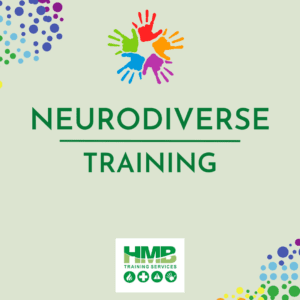Introduction: How to Spot Autistic Burnout
Autistic burnout is a real and often misunderstood experience, one that goes far beyond feeling tired or overwhelmed. How to spot autistic burnout can present as intense physical, mental, and emotional exhaustion that can occur when an autistic person is pushed beyond their limits for too long, often from masking, sensory overload, and constant social demands.
Unlike general burnout, autistic burnout can impact daily functioning, speech, and self-care, and it’s not always recognised by employers, families, or even healthcare professionals. In this blog, we’ll explore the signs of autistic burnout, why it happens, and what to look out for, whether you’re autistic yourself, supporting a loved one, or managing a team in the workplace.
What is Burnout?
Burnout is a state of emotional, physical, and mental exhaustion caused by prolonged stress or overwhelming demands. In neurodivergent people, burnout might not always look the same as it does in neurotypical individuals.
Why Neurodivergent Individuals Are More Prone to Burnout
Burnout can affect anyone, but neurodivergent individuals, including those who are autistic, have ADHD, dyslexia, or other neurological differences, are especially vulnerable. This increased risk often stems from the added mental, emotional, and sensory load they carry just to function in environments that aren’t built with neurodiversity in mind.
Masking
Masking involves consciously or unconsciously suppressing natural behaviours, stimming, or communication styles to appear “neurotypical” and fit in socially or professionally. While masking can help individuals navigate certain environments, it is mentally and physically exhausting. Over time, this constant self-monitoring can lead to identity confusion, anxiety, and eventually, burnout. The more someone masks, the more internal energy they use just to get through the day, leaving very little in reserve for actual tasks or self-care.
Sensory Overload
Many neurodivergent people experience heightened sensitivity to sounds, lights, textures, and other sensory inputs. Environments that are noisy, bright, crowded, or unpredictable can be incredibly draining. If these sensory stressors are constant and if there are no safe, quiet spaces to decompress, the nervous system remains in a heightened state of alert, which accelerates exhaustion and contributes to burnout.
Poorly Designed Workplaces
Most workplaces are structured with neurotypical norms in mind, open-plan offices, strict timekeeping, rapid context-switching, and unspoken social expectations. For neurodivergent individuals, this lack of structure, unclear communication, or rigid rules can create an environment where they are constantly trying to interpret, adapt, or cope without the support they need. This misalignment increases cognitive load and emotional stress, both key contributors to burnout.
Lack of Support or Understanding
When neurodivergent traits are misunderstood or dismissed as “difficult behaviour,” “laziness,” or “attitude,” individuals often feel isolated, judged, or pressured to push through distress. The absence of accommodations or even basic understanding from managers, colleagues, educators, or loved ones, compounds the emotional toll. Without safe spaces to express needs or seek adjustments, stress accumulates, often unnoticed, until full burnout takes hold.
Recognising Signs of Autistic Burnout
Autistic burnout doesn’t always look like typical stress or fatigue. It can be intense, long-lasting, and deeply affect day-to-day functioning. Because it’s not widely understood, even among professionals, it often goes unnoticed or is mislabelled as anxiety, depression, or simply “not coping.” Spotting the signs early is key to offering the right support.
Here are some common signs and symptoms of autistic burnout:
1. Increased Withdrawal
Someone going through autistic burnout may retreat from social situations, stop responding to messages, or avoid interactions at work or home. This withdrawal isn’t about being rude or disinterested, it’s a protective measure when energy is depleted.
2. Loss of Speech or Communication Changes
Some autistic individuals may experience selective mutism or reduced ability to communicate verbally when burned out. Others may find it harder to express themselves clearly, leading to frustration and further isolation.
3. Heightened Sensitivity
Sensory sensitivities often become more intense during burnout. Lights may seem brighter, sounds louder, and smells more overwhelming. Even textures or clothing that were tolerable before might suddenly feel unbearable.
4. Executive Dysfunction
Everyday tasks like getting out of bed, preparing food, or responding to emails can feel impossible. People might describe this as “shutting down” or “hitting a wall.” It’s not laziness; it’s a neurological overload.
5. Emotional Outbursts or Shutdowns
When emotions can no longer be regulated, burnout can result in increased meltdowns or shutdowns. A meltdown might involve crying, yelling, or physical expression of distress. A shutdown may look like going silent, still, or seemingly “numb.”
6. Physical Symptoms
Burnout doesn’t just affect the mind, it can impact the body too. Headaches, stomach issues, fatigue, or even frequent illnesses can emerge due to the stress load on the body.
7. Loss of Skills or Regression
In some cases, people may temporarily lose skills or coping strategies they previously had, such as cooking, travelling alone, or managing routines. This is not permanent but can be alarming for both the individual and those around them.
8. Feeling Numb or Disconnected
Some may describe feeling emotionally numb or like they’re “watching life from the outside.” This dissociation is often a response to prolonged overwhelm and can be a sign that burnout is severe.
Recognising these signs early allows for much-needed rest, adjustments, and recovery. With the right support, autistic burnout is manageable, but it requires awareness, compassion, and time.
Supporting Someone Through Autistic Burnout
When someone is experiencing autistic burnout, the most important response is compassion, not pressure. They need space, understanding, and practical support, not expectations to “push through” or “get back to normal.”
Here’s how you can help:
1. Reduce Demands
Temporarily remove or reduce any non-essential responsibilities. Don’t expect the same level of performance, social interaction, or energy. Let the person set the pace; their brain and body are in recovery mode.
2. Create a Safe, Calm Environment
Whether at home or work, provide a sensory-friendly space. Reduce noise, bright lights, and interruptions. For some, this might mean a quiet room, headphones, dimmed lighting, or time alone to decompress.
3. Allow Time for Recovery
Burnout recovery isn’t quick, it can take weeks or even months depending on the severity. Avoid asking “Are you better yet?” and instead focus on whether they feel supported and safe. Let them take the lead in communicating what they need.
4. Offer Practical Help
Support with meals, chores, errands, or childcare can be life-changing during burnout. Don’t just say “Let me know if you need anything”, offer specific things like:
“Would it help if I brought you some meals this week?”
“Do you want me to cancel any appointments for you?”
5. Communicate Gently
Use simple, clear language and allow plenty of time for responses. Avoid criticism or pushing for explanations, the person may not be able to express what’s going on yet. Patience is key.
6. Support Self-Care in Small Steps
Encourage small, manageable self-care activities, such as:
-
A short walk or time in nature
-
A warm bath or weighted blanket
-
A favourite movie or comfort item
But don’t pressure; what’s restorative for one person may feel overwhelming for another.
7. Help Them Advocate (or Do It for Them)
If needed, speak to their manager, school, or others on their behalf — with their permission. Advocate for time off, reduced hours, reasonable adjustments, or simply greater understanding.
Long-Term Support: Preventing Burnout from Returning
Recovery is only part of the picture, long-term changes help prevent burnout from happening again. These might include:
-
Flexible working patterns
-
Breaks during the day
-
Clear expectations and routines
-
Quiet workspaces or remote options
-
Training for colleagues and managers
-
Encouragement to unmask and be authentic
Autistic burnout isn’t a failure — it’s a sign that someone has been working too hard to cope in a world not built with them in mind. With understanding, support, and changes to their environment, they can recover — and thrive again.
Our Neurodiversity Training – How to Spot Autistic Burnout
Neurodiversity Training for the Workplace for managers, HR personnel and colleagues. The session aims to increase awareness of neurodiversity in the workplace and allow attendees the opportunity to discuss workplace specific circumstances, develop strategies to support a neurodivergent workforce and identify the next steps for their organisation.

The course includes:
- Overview of Neurodiversity
- Why neurodiversity is important
- Associated neurodevelopmental conditions
- Neurodiversity, mental health and wellbeing
- Overview of Autism Spectrum Conditions
- Communication differences
- Strategies to ensure effective communication
- Cognitive Differences in autism
- Strengths and challenges
- Sensory Differences
- Breakdown of senses
- Hyper/Hypo sensitivity
- Environmental considerations
- Neurodiversity best practice in the workplace
- Examples of reasonable adjustments:
- Recruitment processes
- In the workplace
- Examples of reasonable adjustments:
Our Neurodiversity Training is fully interactive with lots of practical games and tasks to perform, including a lot of opportunities for discussions to embed learning. How to spot autistic burnout.
More information click here; https://www.hmbtrainingservices.co.uk/latest-news/offer/neurodiversity-training-for-the-workplace



